-
 Bitcoin
Bitcoin $106,754.6083
1.33% -
 Ethereum
Ethereum $2,625.8249
3.80% -
 Tether USDt
Tether USDt $1.0001
-0.03% -
 XRP
XRP $2.1891
1.67% -
 BNB
BNB $654.5220
0.66% -
 Solana
Solana $156.9428
7.28% -
 USDC
USDC $0.9998
0.00% -
 Dogecoin
Dogecoin $0.1780
1.14% -
 TRON
TRON $0.2706
-0.16% -
 Cardano
Cardano $0.6470
2.77% -
 Hyperliquid
Hyperliquid $44.6467
10.24% -
 Sui
Sui $3.1128
3.86% -
 Bitcoin Cash
Bitcoin Cash $455.7646
3.00% -
 Chainlink
Chainlink $13.6858
4.08% -
 UNUS SED LEO
UNUS SED LEO $9.2682
0.21% -
 Avalanche
Avalanche $19.7433
3.79% -
 Stellar
Stellar $0.2616
1.64% -
 Toncoin
Toncoin $3.0222
2.19% -
 Shiba Inu
Shiba Inu $0.0...01220
1.49% -
 Hedera
Hedera $0.1580
2.75% -
 Litecoin
Litecoin $87.4964
2.29% -
 Polkadot
Polkadot $3.8958
3.05% -
 Ethena USDe
Ethena USDe $1.0000
-0.04% -
 Monero
Monero $317.2263
0.26% -
 Bitget Token
Bitget Token $4.5985
1.68% -
 Dai
Dai $0.9999
0.00% -
 Pepe
Pepe $0.0...01140
2.44% -
 Uniswap
Uniswap $7.6065
5.29% -
 Pi
Pi $0.6042
-2.00% -
 Aave
Aave $289.6343
6.02%
Is the high-level passivation of the KDJ indicator a sell signal? How to deal with it?
High-level passivation on the KDJ indicator suggests sustained bullish momentum in crypto, where overbought conditions persist without immediate reversal signals.
Jun 17, 2025 at 12:49 am
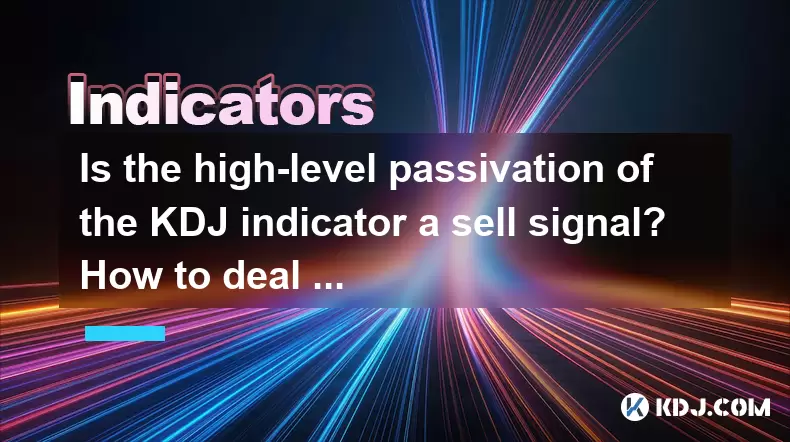
Understanding the KDJ Indicator in Cryptocurrency Trading
The KDJ indicator, also known as the stochastic oscillator, is a momentum-based technical analysis tool widely used in cryptocurrency trading. It consists of three lines: the %K line, the %D line, and the %J line. These lines help traders assess overbought or oversold conditions, potential trend reversals, and momentum shifts in price action.
In crypto markets, where volatility is high and trends can change rapidly, understanding signals from the KDJ becomes crucial for timing entries and exits effectively.
What Does High-Level Passivation Mean?
High-level passivation refers to a situation where the KDJ lines (%K and %D) remain at or near extreme levels (typically above 80) for an extended period without crossing down significantly. This indicates that the asset might be in an overbought condition but continues to hold its upward momentum.
In cryptocurrency trading, this phenomenon often occurs during strong bullish phases, especially when whales or institutional buyers are accumulating assets aggressively. Despite being technically "overbought," prices may continue rising due to sustained demand.
Is High-Level Passivation a Sell Signal?
While many traders interpret high-level readings on the KDJ as a sell signal, high-level passivation itself does not necessarily mean a reversal is imminent. In fact, during strong uptrends in crypto markets, KDJ lines can stay elevated for long periods without triggering a significant pullback.
It’s essential to combine KDJ analysis with other tools such as volume indicators, moving averages, and support/resistance levels to confirm whether a sell signal is credible. Relying solely on KDJ readings can lead to premature exits from profitable positions.
How to Interpret KDJ Crossovers During Passivation
During high-level passivation, crossovers between the %K and %D lines should be interpreted with caution. A bearish crossover (where the %K line crosses below the %D line) might suggest weakening momentum, but it doesn't guarantee a reversal if the overall trend remains bullish.
Conversely, if the %J line drops sharply from overbought territory, it could indicate exhaustion in buying pressure. However, in highly liquid and volatile crypto markets, these signals can produce false alarms unless confirmed by candlestick patterns or other technical indicators like RSI or MACD.
Practical Steps to Deal with High-Level Passivation
To effectively manage trades during KDJ high-level passivation, consider the following strategies:
- Use multiple time frame analysis: Check higher time frames (like 4H or daily charts) to understand the broader trend before making decisions based on short-term KDJ signals.
- Monitor volume changes: A drop in volume during high-level passivation may hint at waning interest, which could precede a correction.
- Observe price structure: Look for bearish engulfing candles or rejection at key resistance zones alongside KDJ signals for stronger confirmation.
- Set dynamic stop-loss levels: Instead of exiting entirely on a KDJ crossover, adjust stop-loss orders to protect gains while allowing room for the trend to continue.
- Combine with moving averages: If the price is still comfortably above key moving averages (like the 20 EMA), it may not yet be time to sell despite KDJ warnings.
Adjusting Your Trading Strategy Based on Market Conditions
Crypto markets operate differently from traditional financial instruments. Therefore, applying rigid interpretations of technical indicators like KDJ can lead to missed opportunities or unnecessary losses. Traders should adapt their interpretation of high-level passivation depending on whether the market is trending, ranging, or experiencing breakout behavior.
For example, during a strong bull run, holding through temporary overbought signals may yield better results than selling prematurely. Conversely, during consolidation phases, respecting KDJ-generated sell signals can prevent entering choppy or sideways movements.
Frequently Asked Questions
What is the difference between overbought and high-level passivation on the KDJ?
Overbought refers to the KDJ lines crossing above 80, indicating a possible reversal. High-level passivation describes a scenario where the KDJ remains consistently above 80 for an extended period, suggesting continued strength rather than immediate reversal.
Can I use KDJ alone to make trading decisions in crypto?
Relying solely on KDJ can be risky due to the volatility and unique behavior of crypto markets. It's best used in combination with other indicators such as RSI, MACD, and volume metrics for more reliable signals.
How do I know if high-level passivation is about to end?
Watch for divergence between price and KDJ, a sharp decline in the %J line, or bearish candlestick patterns forming at resistance levels. These signs may indicate the start of a correction or trend reversal.
Should I exit my position if KDJ shows high-level passivation?
Not necessarily. Evaluate the broader trend, volume, and support/resistance levels before deciding. In strong uptrends, holding through temporary passivation can result in larger profits.
Disclaimer:info@kdj.com
The information provided is not trading advice. kdj.com does not assume any responsibility for any investments made based on the information provided in this article. Cryptocurrencies are highly volatile and it is highly recommended that you invest with caution after thorough research!
If you believe that the content used on this website infringes your copyright, please contact us immediately (info@kdj.com) and we will delete it promptly.
- 2025-W Uncirculated American Gold Eagle and Dr. Vera Rubin Quarter Mark New Products
- 2025-06-13 06:25:13
- Ruvi AI (RVU) Leverages Blockchain and Artificial Intelligence to Disrupt Marketing, Entertainment, and Finance
- 2025-06-13 07:05:12
- H100 Group AB Raises 101 Million SEK (Approximately $10.6 Million) to Bolster Bitcoin Reserves
- 2025-06-13 06:25:13
- Galaxy Digital CEO Mike Novogratz Says Bitcoin Will Replace Gold and Go to $1,000,000
- 2025-06-13 06:45:13
- Trust Wallet Token (TWT) Price Drops 5.7% as RWA Integration Plans Ignite Excitement
- 2025-06-13 06:45:13
- Ethereum (ETH) Is in the Second Phase of a Three-Stage Market Cycle
- 2025-06-13 07:25:13
Related knowledge
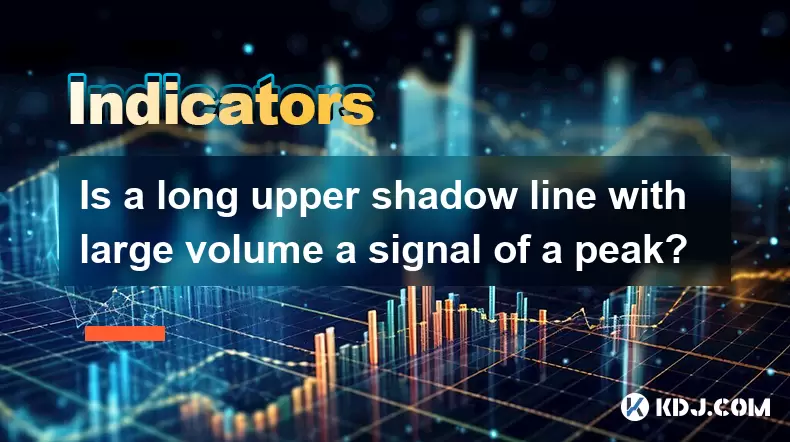
Is a long upper shadow line with large volume a signal of a peak?
Jun 17,2025 at 05:07am
Understanding the Long Upper Shadow LineA long upper shadow line, often referred to as a shooting star or inverted hammer depending on its location in a chart, is a candlestick pattern that indicates potential reversal from an uptrend. This pattern forms when prices rise significantly during the trading period but then fall back to close near the openin...

How to confirm the effectiveness of the average price line support in the time-sharing chart?
Jun 17,2025 at 12:56am
Understanding the Time-Sharing Chart and Its RelevanceIn cryptocurrency trading, time-sharing charts play a crucial role in analyzing short-term price movements. These charts typically display price fluctuations over a specific period, often ranging from minutes to hours. Traders rely on them to make quick decisions based on real-time data. The average ...

What does it mean when the momentum indicator breaks above the zero axis?
Jun 17,2025 at 12:43am
Understanding the Momentum IndicatorThe momentum indicator is a technical analysis tool used to measure the speed or velocity of price movements in cryptocurrency markets. It helps traders identify potential trend reversals, overbought or oversold conditions, and confirms existing trends. The indicator typically oscillates around a zero line, with value...
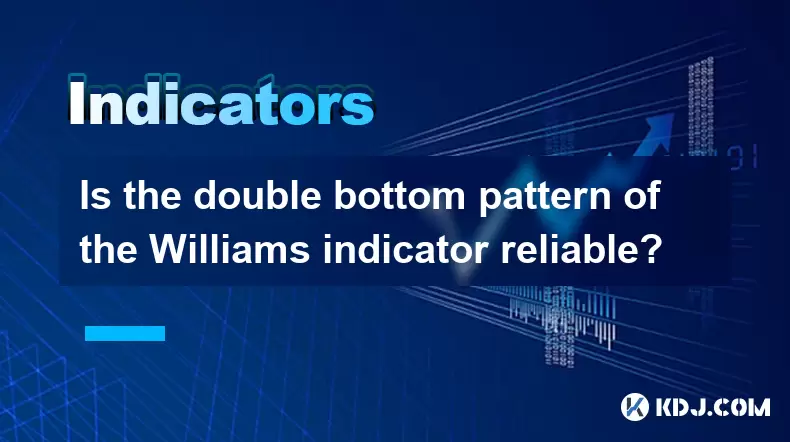
Is the double bottom pattern of the Williams indicator reliable?
Jun 17,2025 at 03:56am
Understanding the Williams Indicator and Its SignificanceThe Williams %R indicator, often referred to as Williams Percent Range, is a momentum oscillator used in technical analysis to identify overbought or oversold conditions in the market. Developed by Larry Williams, this indicator fluctuates between 0 and -100, with readings above -20 indicating ove...
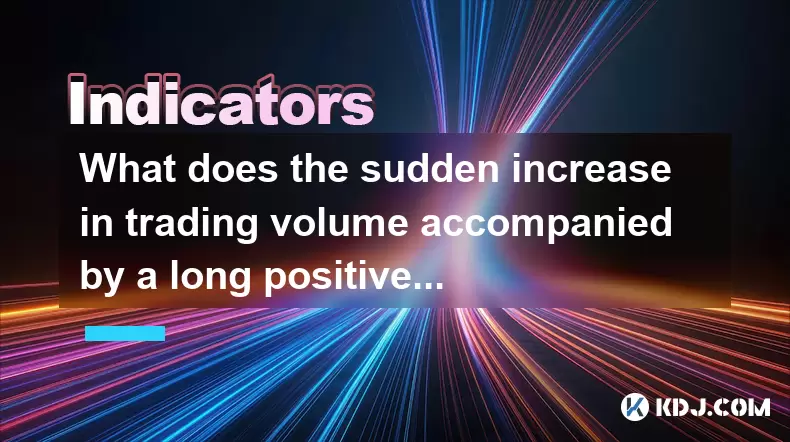
What does the sudden increase in trading volume accompanied by a long positive line mean?
Jun 17,2025 at 06:01am
Understanding the Sudden Surge in Trading VolumeWhen traders observe a sudden increase in trading volume, it typically signals a significant shift in market sentiment. This surge often indicates that more participants are entering or exiting positions, which could be due to news events, macroeconomic data releases, or institutional activity. High tradin...
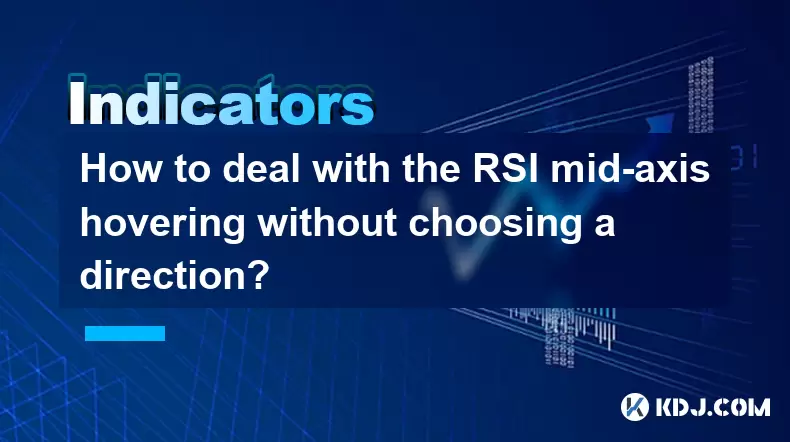
How to deal with the RSI mid-axis hovering without choosing a direction?
Jun 17,2025 at 02:02am
Understanding RSI Mid-Axis Hovering in Cryptocurrency TradingThe Relative Strength Index (RSI) is a popular momentum oscillator used by traders to assess whether an asset is overbought or oversold. In cryptocurrency markets, it's common for the RSI to hover around its mid-axis, typically at the 50 level, without showing a clear upward or downward trend....

Is a long upper shadow line with large volume a signal of a peak?
Jun 17,2025 at 05:07am
Understanding the Long Upper Shadow LineA long upper shadow line, often referred to as a shooting star or inverted hammer depending on its location in a chart, is a candlestick pattern that indicates potential reversal from an uptrend. This pattern forms when prices rise significantly during the trading period but then fall back to close near the openin...

How to confirm the effectiveness of the average price line support in the time-sharing chart?
Jun 17,2025 at 12:56am
Understanding the Time-Sharing Chart and Its RelevanceIn cryptocurrency trading, time-sharing charts play a crucial role in analyzing short-term price movements. These charts typically display price fluctuations over a specific period, often ranging from minutes to hours. Traders rely on them to make quick decisions based on real-time data. The average ...

What does it mean when the momentum indicator breaks above the zero axis?
Jun 17,2025 at 12:43am
Understanding the Momentum IndicatorThe momentum indicator is a technical analysis tool used to measure the speed or velocity of price movements in cryptocurrency markets. It helps traders identify potential trend reversals, overbought or oversold conditions, and confirms existing trends. The indicator typically oscillates around a zero line, with value...

Is the double bottom pattern of the Williams indicator reliable?
Jun 17,2025 at 03:56am
Understanding the Williams Indicator and Its SignificanceThe Williams %R indicator, often referred to as Williams Percent Range, is a momentum oscillator used in technical analysis to identify overbought or oversold conditions in the market. Developed by Larry Williams, this indicator fluctuates between 0 and -100, with readings above -20 indicating ove...

What does the sudden increase in trading volume accompanied by a long positive line mean?
Jun 17,2025 at 06:01am
Understanding the Sudden Surge in Trading VolumeWhen traders observe a sudden increase in trading volume, it typically signals a significant shift in market sentiment. This surge often indicates that more participants are entering or exiting positions, which could be due to news events, macroeconomic data releases, or institutional activity. High tradin...

How to deal with the RSI mid-axis hovering without choosing a direction?
Jun 17,2025 at 02:02am
Understanding RSI Mid-Axis Hovering in Cryptocurrency TradingThe Relative Strength Index (RSI) is a popular momentum oscillator used by traders to assess whether an asset is overbought or oversold. In cryptocurrency markets, it's common for the RSI to hover around its mid-axis, typically at the 50 level, without showing a clear upward or downward trend....
See all articles

























































































